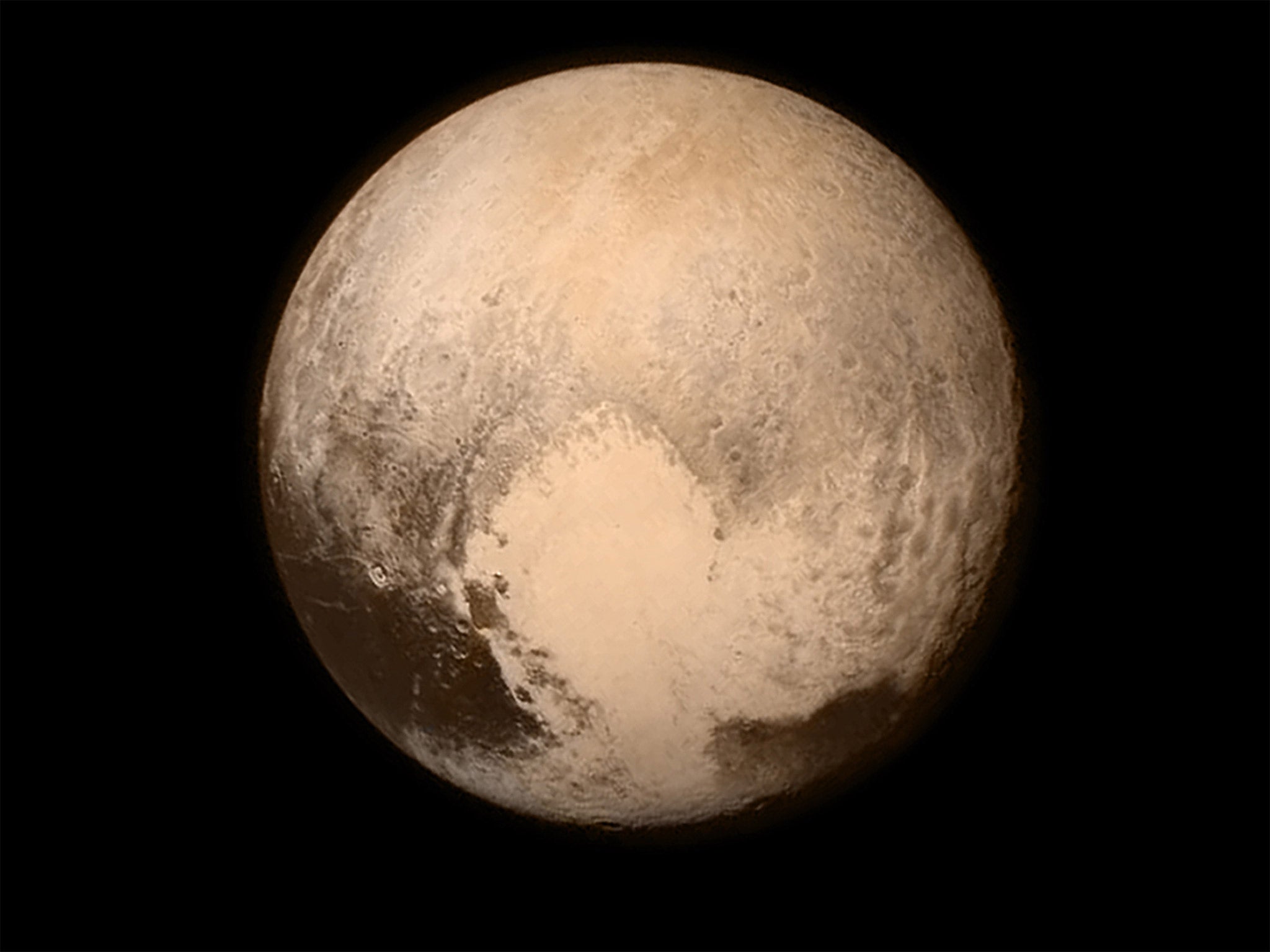Pluto's heart named 'Tombaugh Regio' in celebration of dwarf planet's discovery
The shape of the heart was only discovered in recent weeks, when New Horizons sent back pictures of it in unprecedented details

Your support helps us to tell the story
From reproductive rights to climate change to Big Tech, The Independent is on the ground when the story is developing. Whether it's investigating the financials of Elon Musk's pro-Trump PAC or producing our latest documentary, 'The A Word', which shines a light on the American women fighting for reproductive rights, we know how important it is to parse out the facts from the messaging.
At such a critical moment in US history, we need reporters on the ground. Your donation allows us to keep sending journalists to speak to both sides of the story.
The Independent is trusted by Americans across the entire political spectrum. And unlike many other quality news outlets, we choose not to lock Americans out of our reporting and analysis with paywalls. We believe quality journalism should be available to everyone, paid for by those who can afford it.
Your support makes all the difference.Nasa has named the heart-shaped region of Pluto in celebration of the dwarf planet’s pioneering discoverer Clyde Tombaugh.
The area will now be informally known as “Tombaugh Regio” — regio being latin for region — Nasa announced during its first press conference following the historic Pluto flyby. The heart-shaped bit of Pluto has become an iconic symbol of the planet, since it was first seen in pictures sent back by the New Horizons craft.
The first detailed pictures sent back of the planet came in recent weeks, and finally settled the exact shape of the bright patch on its surface, as well as showing the surprising Mars-like reddish hue. Scientists have long known about the existence of the patch — and seen that it has been getting gradually less bright — but didn’t have detailed enough pictures to be able to say what shape it was.
Pluto was identified in 1930 by US astronomer Clyde Tombaugh using a 13in photographic telescope at the Lowell Observatory in Flagstaff, Arizona. Tombaugh began his study of space in the early 20th century, building his own telescopes after a hailstorm ruined his family’s crops and he was unable to go to university.
Some of his ashes are being carried to the world he discovered on New Horizons. His children have been actively involved in the mission, and were present at the event yesterday when Nasa announced the region’s new informal name.
It wasn’t the only place to be given a new name during the conference. Scientists announced that they had taken to calling a large dark patch on Charon, Pluto’s moon, “Mordor” — after the dark and evil region in the Lord of the Rings.
Additional reporting by Press Association
Join our commenting forum
Join thought-provoking conversations, follow other Independent readers and see their replies
Comments